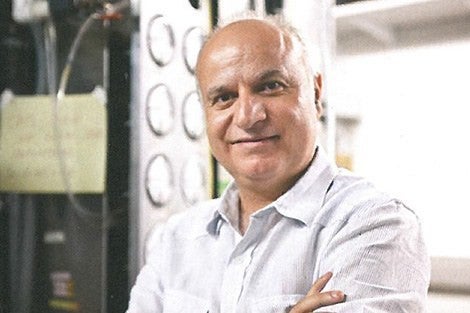[ Fall 2011 ]
The year-old Center for Nanotechnology and Nanotoxicology at HSPH (dubbed the Nano-Center) draws on the School’s long history of studying air particles and their public health impacts. After more than two decades developing methods that have become industry standard for assessing the health effects of exposure to atmospheric particles, HSPH researchers are poised to study the applications and implications of newly engineered nanomaterials and nanotechnology.
“We now have the ability to generate and manipulate exotic nanostructures nobody ever put on the planet before,” says Philip Demokitrou, assistant professor of aerosol physics in the Department of Environmental Health, who is among the center’s founding faculty and its director.” But how will these affect biological systems and the environment?”
Nanotechnology–the science of engineering of particles less than 100 nanometers wide (or 1/1,000th the diameter of a human hair), for use in everything from personal electronics to medical devices to food packaging–has grown dramatically in the past several years. Widely considered to be the industrial revolution of the 21st century, the field has the potential to help develop solutions for improved drug delivery and more efficient clean energy alternatives. By 2015, the global market for manufactured goods using nanomaterials is predicted to exceed $1 trillion. Yet the field is still largely unregulated–and scientists are just beginning to understand the possible environmental and public health risks nanoparticles might pose.
Panasonic Corporation, one of the Center’s major supporters and industrial partners, gave $300,000 in April to fund HSPH research on nanoscience and environmental health. The company was ranked one of the world’s top 100 most sustainable corporations in 2011 by Corporate Knights, a magazine that focuses on clean capitalism.
Demokitrou says that collaborations between the NanoCenter and major nanotechnology companies such as Panasonic represent a “unique opportunity to establish a more sustainable model for industry than we had in the 20th century.”
Historically, public health investigations have tended to uncover environmental health disasters, such as the pervasive toxic effects of asbestos or PCBs, decades after the damage has been done. Linking research to industry through the Center can help companies establish parameters for safer product development before new materials ever reach the marketplace. As Demokitrou says, “I can’t think of a better way to safeguard public health.”
Learn more about the NanoCenter at www.hsph.harvard.edu/nano.
Photo: Kent Dayton/HSPH
